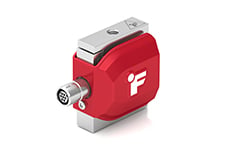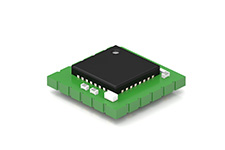What is adhesion force?
Adhesion force is the strength of attraction between materials or surfaces upon contact, crucial in manufacturing and product performance. It's vital in adhesive bonding for durability, surface coatings to prevent peeling, printing for quality, packaging to secure items, and product functionality affecting safety and traction.
How to measure adhesion force?
Measuring adhesion force, particularly in the context of adhesive bonding and peel testing, is a critical aspect of quality control and material testing. An adhesion testing machine, also known as a Peel Test Fixture or Adhesion Testing Equipment, measures the force required to separate bonded materials. ASTM D3330 is a recognized standard for measuring the peel adhesion properties of pressure-sensitive tapes.
One end of the bonded materials is typically affixed to a stationary fixture, while the other end is attached to a movable fixture. The machine initiates the test by applying a controlled force, often in the form of a pulling force or peeling motion, to the movable fixture. This force is applied at a specified rate and angle. The machine records the applied force and the corresponding displacement or extension as the bonded materials start to separate. It quantifies the strength of the bond between materials by subjecting them to controlled mechanical forces, enabling manufacturers and researchers to assess the adhesion quality and suitability for specific applications.
How can a load cell be used in an adhesion force measurement machine?
A load cell is a key component in an adhesion force measurement machine. It is used to measure the force applied during the adhesion or peel test. In a Peel Test Fixture or Adhesion Testing Equipment, the load cell is typically integrated into the header of the test apparatus, and it directly senses and records the force required to separate the bonded materials. This force measurement is crucial for accurately quantifying adhesion strength and ensuring that the test conditions are consistent and repeatable. Load cell data is typically displayed in real-time and can be used for analysis and reporting, making it an essential element in the adhesion force measurement process.
Why is FUTEK LSB206 load cell series and QIA128 embedded digital signal conditioner suitable for Adhesion Force Testing?
The LSB206 Digital Miniature S Beam load cell offers accurate measurement of adhesion forces with a nonlinearity of ±0.1% of load cell capacity. It includes a uniquely designed built-in 10x overload protection in both tension and compression directions, with capacities ranging from 1 lb to 100 lbs. The model features M3x0.5 female threads, a 17-4 SS flexure, and a stamped aluminum enclosure. LSB206 provides two cable options: a 7-pin Nano connector for easy disconnection or a cable version with mechanical strain relief. For embedded OEM applications, SPI or UART output options are available, along with signal conditioning support and software packages for data capture and analysis. For more detailed information on UART and SPI in embedded systems, you can refer to this technical article - "UART And SPI In Embedded Systems".
Additionally, the load cell's low power consumption of 78mW enhances efficiency and minimizes energy usage during testing. Its high precision guarantees accurate adhesion force measurements, while its high fatigue rate, tested for millions of cycles, ensures long-lasting and reliable performance. Moreover, its compact, miniature, and lightweight (14 grams enclosed in a compact 0.75-inch (19.05mm) height and 0.38-inch (9.5mm) package) design means it doesn't take up much space in the peeling test machine assembly, making it an excellent fit where space constraints may be a concern.
The FUTEK QIA128 digital embedded signal conditioner offers a high data capture rate, capable of sampling up to 1,300 SPS with 11.4 Bits Noise-Free Resolution, ensuring accurate capture of essential test events and data points. Despite its miniature 8 mm x 8 mm board size, it delivers excellent performance. The combination of LSB206 with embedded QIA128 high sampling rate signal conditioner support compatibility of your adhesive peel test stand with both ASTM D3330 or ASTM D1876 peel adhesion testing standards.
NOTE: If needed, FUTEK also offers a USB Test Kit to integrate the sensor output with a notebook USB port. This USB-to-PC device can be used by the development team for prototyping, validation , and testing.
How it Works
One end of the bonded materials is secured to a fixed fixture of the adhesion force tester while the opposite end is connected to a fixture that is capable of movement.
As the movable fixture of the machine applies a pulling force or peeling motion on the bonded material, the applied force is captured by the LSB206 load cell and data is recorded for post-analysis to determine the adhesion force.
- FUTEK QIA128 Miniature Embedded Low Power Digital Signal Conditioner with SPI / UART output reads friction force data up to 1300 SPS, to ensure all test important events and data points are captured.
If more detailed data is required, utilizing FUTEK's SENSIT™ Test and Measurement Software allows operators the ability to live graph and log all data collected.
Contact Us
Please Contact Us with questions.
What is adhesion force?
Adhesion force is the strength of attraction between materials or surfaces upon contact, crucial in manufacturing and product performance. It's vital in adhesive bonding for durability, surface coatings to prevent peeling, printing for quality, packaging to secure items, and product functionality affecting safety and traction.
How to measure adhesion force?
Measuring adhesion force, particularly in the context of adhesive bonding and peel testing, is a critical aspect of quality control and material testing. An adhesion testing machine, also known as a Peel Test Fixture or Adhesion Testing Equipment, measures the force required to separate bonded materials. ASTM D3330 is a recognized standard for measuring the peel adhesion properties of pressure-sensitive tapes.
One end of the bonded materials is typically affixed to a stationary fixture, while the other end is attached to a movable fixture. The machine initiates the test by applying a controlled force, often in the form of a pulling force or peeling motion, to the movable fixture. This force is applied at a specified rate and angle. The machine records the applied force and the corresponding displacement or extension as the bonded materials start to separate. It quantifies the strength of the bond between materials by subjecting them to controlled mechanical forces, enabling manufacturers and researchers to assess the adhesion quality and suitability for specific applications.
How can a load cell be used in an adhesion force measurement machine?
A load cell is a key component in an adhesion force measurement machine. It is used to measure the force applied during the adhesion or peel test. In a Peel Test Fixture or Adhesion Testing Equipment, the load cell is typically integrated into the header of the test apparatus, and it directly senses and records the force required to separate the bonded materials. This force measurement is crucial for accurately quantifying adhesion strength and ensuring that the test conditions are consistent and repeatable. Load cell data is typically displayed in real-time and can be used for analysis and reporting, making it an essential element in the adhesion force measurement process.
Why is FUTEK LSB206 load cell series and QIA128 embedded digital signal conditioner suitable for Adhesion Force Testing?
The LSB206 Digital Miniature S Beam load cell offers accurate measurement of adhesion forces with a nonlinearity of ±0.1% of load cell capacity. It includes a uniquely designed built-in 10x overload protection in both tension and compression directions, with capacities ranging from 1 lb to 100 lbs. The model features M3x0.5 female threads, a 17-4 SS flexure, and a stamped aluminum enclosure. LSB206 provides two cable options: a 7-pin Nano connector for easy disconnection or a cable version with mechanical strain relief. For embedded OEM applications, SPI or UART output options are available, along with signal conditioning support and software packages for data capture and analysis. For more detailed information on UART and SPI in embedded systems, you can refer to this technical article - "UART And SPI In Embedded Systems".
Additionally, the load cell's low power consumption of 78mW enhances efficiency and minimizes energy usage during testing. Its high precision guarantees accurate adhesion force measurements, while its high fatigue rate, tested for millions of cycles, ensures long-lasting and reliable performance. Moreover, its compact, miniature, and lightweight (14 grams enclosed in a compact 0.75-inch (19.05mm) height and 0.38-inch (9.5mm) package) design means it doesn't take up much space in the peeling test machine assembly, making it an excellent fit where space constraints may be a concern.
The FUTEK QIA128 digital embedded signal conditioner offers a high data capture rate, capable of sampling up to 1,300 SPS with 11.4 Bits Noise-Free Resolution, ensuring accurate capture of essential test events and data points. Despite its miniature 8 mm x 8 mm board size, it delivers excellent performance. The combination of LSB206 with embedded QIA128 high sampling rate signal conditioner support compatibility of your adhesive peel test stand with both ASTM D3330 or ASTM D1876 peel adhesion testing standards.
NOTE: If needed, FUTEK also offers a USB Test Kit to integrate the sensor output with a notebook USB port. This USB-to-PC device can be used by the development team for prototyping, validation , and testing.


